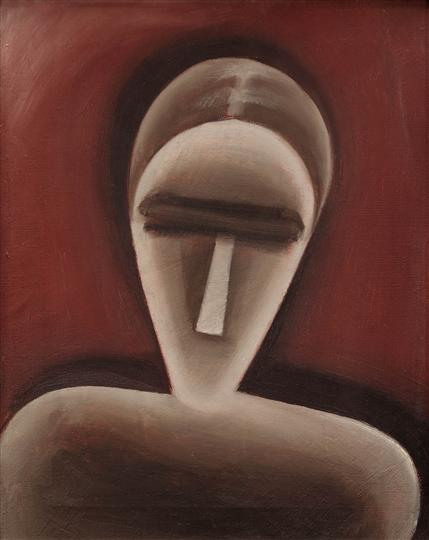Description
The work "Hlava Díckky (Slepá - Hlava Eny)" by Josef? Avel, painted in 1916, is erected as a fascinating example of symbolism and the exploration of the human psyche that characterizes the work of the Czech artist. ? A? A? A?
From a first glance, the composition is presented focused on the head of a young woman, whose expression embodies an introspective character and, perhaps, melancholic. The simplicity of the representation is misleading; Through a reduced colored palette that predominate terrible and ocher tones,? Aveling manages to transmit deep emotion. The execution of the skin, almost ethereal, seems to battle between reality and the dreamlike, making us question the nature of the perception we have about the subject portrayed. The lines are soft and fluid, suggesting an inherent fragility, while subtle contrasts in the light help highlight the contours of the face, giving it an almost palpable dimensionality.
The lack of details in the background, where neutral tones predominate, allows the viewer's attention to be directed entirely to the young woman's face. This compositional election resonates with the idea of isolation and contemplation, two recurring themes in the work of? Avel, who was influenced by the experience of his time in the midst of a Europe full of agitation and conflict. At the same time, the title of painting, which mentions both the "head of a girl" and the "head of a blind woman", evokes a duality that invites various interpretations. Blindness could symbolize a lack of vision not only in the literal sense, but also metaphorical, suggesting a disconnection of the outside world or even an introspective vision that, despite its limiting nature, could open the door to other levels of perception.
Josef? Avel, brother of the writer Karel? Avel, was a pioneer of Czech Cubism and also an art defender as a tool for reflection and social criticism. His work covers both painting and illustration and design, but is always distinguished by deep attention to emotional and psychological detail. "Hlava Díckky" reflects this sensitivity, approaching the female experience and the expression of feelings at a time when the role of women in society was constantly evolving.
The historical context in which this painting takes place, a period marked by World War I, gives the work of a background that increases its symbolic burden. The feeling of instability and the questioning of identity are reflected not only in the figure represented, but in the atmosphere that emanates from the work. ? Avel, with his unique style that fuses cubism with expressionism, offers us a visual comment on human fragility and the hidden truths behind appearances.
In summary, "Hlava Díckky (Slepá - Hlava eny)" is not only a portrait of a female figure, but a deep analysis that invites introspection on the human condition. Through a serene composition but loaded with meaning, Josef? Avel renews the way we perceive emotions, pain and the search for light in a world often vitiated by darkness. Suite of its contemporaries, this work remains relevant and resonant, an invitation to look beyond the surface and to explore the complexities that lie inside us.
KUADROS ©, a famous paint on your wall.
Hand-made oil painting reproductions, with the quality of professional artists and the distinctive seal of KUADROS ©.
Art reproduction service with satisfaction guarantee. If you are not completely satisfied with the replica of your painting, we refund your money 100%.

